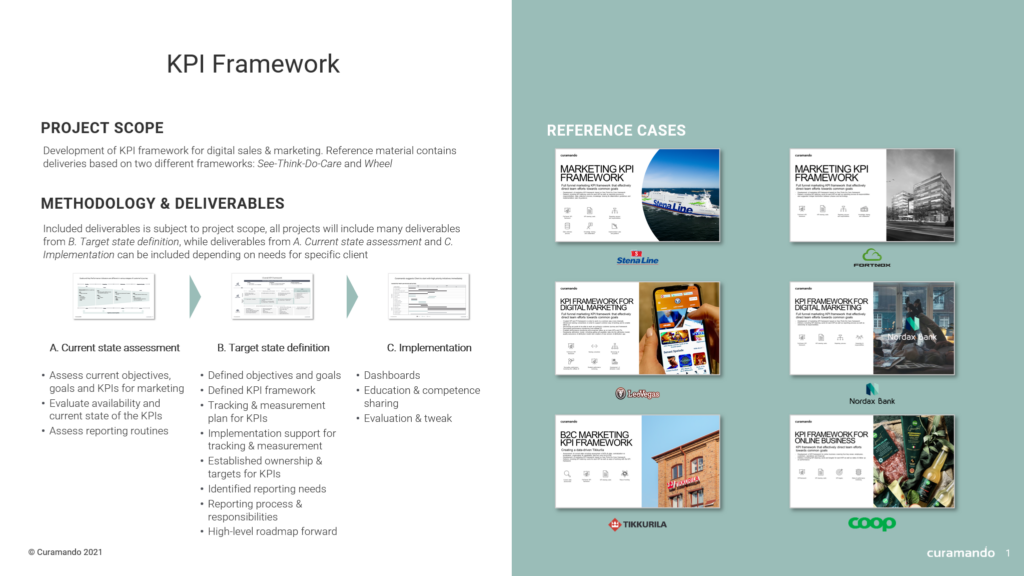You feel the tingling feeling of excitement after starting a new position at a new business. And the best part; you are the new CMO! A dream position. A great opportunity to enter a new exciting time and you are full of energy. But where do you actually start? The job sounded quite tangible at first glance and the scope easy-to-understand. But only a few days in, it is all a blur. Here is a 5-step guide to give you a helping hand, based on the knowledge from Curamando interim positions; the first 5 steps for you to tick off when you start. But first a humble note to self: they sound much easier than they are in real life.
Here we go:
Number 1: Identify your main stakeholders
This sounds easy, but who in fact are the stakeholders? From a wider perspective, they are colleagues that have a say in what you do and what you prioritize. They are the crowd you need to stay close to; keep in the loop and inform of your steps. The people you should set up regular meetings with and have a clear agenda and a plan of activities. Make sure to steer the agenda; to show the plan, steps taken and progress. Most importantly, stay open to feedback and agile changes. Proactively ask for input and be open to other ways to adapt.
Number 2: Clear goals and KPIs
The first question as the new CMO would be to get a clear picture of the goals – what does “success” identify as? Here’s a warning: the first answer is probably “increased sales” or “increased awareness” but here you need to dig deeper to understand at what cost, with what resources and timings should these goals be achieved? Here is the first true hurdle for you to climb where the business’s resources may not go hand-in-hand with the goals. The budget is the most important “tool”. A budget should be broken down by month, per media channel and with a set of KPIs for each channel. Make sure to clarify these to the stakeholders for sign off and alignment. Now we are all set to GO – GO – GO.

Number 3: Campaign plan and process
Now the fun part begins! Campaign planning and the exciting live moment of going to market! The very first step here is to get a grip of the target audience, the “reason why” and the uniqueness of your product; to truly understand why the consumer purchases and how. How to get this information is a chapter in itself, but the one tip here is to be bold and curious! Try your hypothesis and test the product towards the target audience and have an agile approach to receive feedback from the customer in combination with quantitative data such as Orvesto, Google Analytics and Social Media. The internal process of how to set up a yearly camping plan should be to gather feedback from supply and product managers, as well as sales. The rule of thumb is that the further you plan ahead, the easier it will be to change and react to external situations and needs. The creative follow the same rule of thumb; be curious and adapt to local needs and customers’ response.

Number 4: Live! Test & adapt
You are now live with the campaign! Exciting! The fun part now is to follow how the sales progress. Make sure you have access to real-time sales data that you can follow on a daily basis. This gives you the upper hand to quickly adapt, and to respond to any consumer feedback – or lack of feedback provided by purchasing customers. What they like and how they react are important hints for you to adapt to, and test A/B versions of the creative and media ads, prices or messaging. The more digital you are, the easier this will be. A way to build innovation in the process, is to adapt the 90 / 10 strategy that stipulates to use 10% of the budget to test new media or creative that haven’t been tested before.
“Make sure you have access to real-time sales data that you can follow on a daily basis. This gives you the upper hand”
Number 5: Follow up
The last step is to follow up – the step we probably have the hardest time to invest time and care into, simply because of a lack of time. But please; skipping this is just not the way to climb the “ladder of learning”. Dig deeper into what the results were and try to answer the question “why” will give you the data to make a fact based decision. Here you need to look into the systems provided by the media platforms, but also take the opportunity to ask the customers for feedback via an easy google form or Facebook; use the systems at hand. And you will learn as you go. Remember; the beauty of Marketing is that there is no “truth” or right answer.
Author: Åsa Elmcrona







